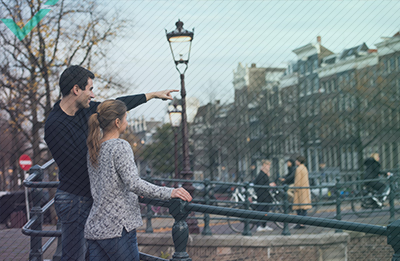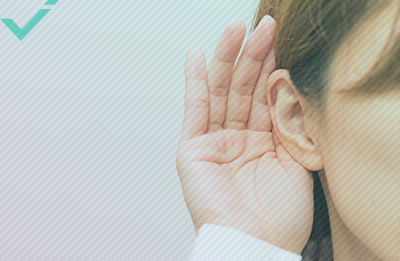American professor of cognitive science Douglas R. Hofstadter describes an ambigram as a “calligraphic design that manages to squeeze two different readings into the selfsame set of curves”. Ambigramists—artists who create ambigrams—often use a variety of styles to make multiple different ambigrams out of the same word. Have you ever seen a word that reads the same even after you flip it upside down? That’s an ambigram. And there are numerous other types too. Ambigrams are important simply because they add a unique visual component to whatever you’ve created—be it a book, magazine, video, social media post, etc.

WHERE DO AMBIGRAMS COME FROM?
The very first ambigram to be discovered was created by artist Peter Newell back in 1893. He published several books—Topsys and Turvys 1 and 2 in 1893 and 1902 respectively, The Hole Book in 1908, and The Slant Book in 1910—all of which contained what he referred to as “invertible illustrations”. One of his most popular ambigrams reads “THE END” in one direction and “PUZZLE” when looked at upside down. Despite this, he was better known for the illustrations he created for famous authors like Mark Twain and Lewis Carroll.
Although these art forms date back to the late 1800s, they weren’t publicly referenced until 1979 by Hofstadter. Over time, they became increasingly popular, and this is widely accredited to the fact that they’ve been used in popular books, movies, and album covers. Dan Brown’s best seller Angels & Demons used an ambigram (created by John Langdon) in some versions of the book cover and movie credits. The Grateful Dead used ambigrams on multiple album covers, including Aoxomoxoa and American Beauty. The 1987 film Princess Bride used a rotational ambigram for their movie posters as well.

WHAT ARE SOME DIFFERENT TYPES OF AMBIGRAMS?
Today, there are over a dozen different types of ambigrams to choose from. The most popular ones are:
- 3-dimensional: An object that appears to have several different letters or words depending on the viewing angle.
- Chain: Where words and letters are interlinked, sometimes overlapping, to form a repeating chain.
- Dihedral: A mirror-style image containing only numbers.
- Figure-ground: A design that utilises the spaces between letters to form additional words.
- Mirror-image: A word that retains its meaning when viewed in a mirror. Also known as a glass door ambigram.
- Multi-lingual: A word that can be read one way in a certain language and another way in a completely different language.
- Natural: A word that is an ambigram naturally, without any additional formatting. For example: dollop, suns, pod, swims, and bud.
- Perceptual shift (oscillation): An asymmetrical ambigram that can be interpreted as two different words depending on the linear design.
- Rotational: A word that can be viewed and interpreted while rotating through multiple different angles.
- Strobogrammatic: A natural, rotational ambigram containing only numbers.
- Space-filling: Somewhat like chain ambigrams, but tiled to fill in a 2-dimensional plane.
- Spinonym: A design where all the letters are made out of the same symbol or character. Also referred to as rotoglyphs or rotaglyphs.
- Symbiotogram: An ambigram that can be read as two different words when rotated.
HOW TO CREATE YOUR OWN AMBIGRAM
The earliest ambigrams were created by hand, and many still are, but the most common methods at present are computerised. These days, software such as FlipScript and Design Shack is available for users to easily create their own ambigrams. These programs typically pull designs from a database containing millions of different lettering styles and curves.
Have you ever used an ambigram in one of your designs? If so, how did you create it and what software did you use (if any)? Reach out on Twitter and let us know!


